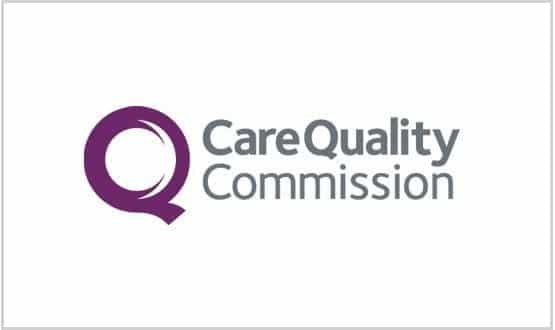EDing in a paperless direction
- 29 May 2013

Stockport NHS Foundation Trust has a vision of becoming a centre of excellence when it comes to IT. The IT department may be tucked away in a run-down, seemingly unimportant building, a good five minute walk from the main hospital.
But once you step through the front door, the building is buzzing with activity. The trust is due to go live with its ‘Paperless in ED’ project the week after next, entailing a major change in the way that the busy emergency department works.
Meanwhile, with the largest capital investment in IT the trust has ever had, the team is also working on a clinical portal, a patient portal, an electronic document management system, and a community mobile working project. Among others.
Paperless in ED
The trust’s assistant director of information, Ian Curr, hopes ‘paperless in ED’ will not only be a big step forward, but one that will generate more enthusiasm for technology at the trust.
The project has already deployed 60 iPads to staff, to give them access to the trust’s in-house creation, the Advantis ED system.
This means a clinician can assess and diagnose a patient at their bedside with an iPad in hand, entering information that automatically updates the system in real time.
Curr says the idea is to help improve performance in the emergency department and generate better clinical data for colleagues working in health and social care.
“A nurse or doctor sees the patient arriving on the screen. If they tap on the patient’s name on the iPad, then information is pulled through from the patient administration system,” he says.
Stockport has also been working on its own health record, which enables out of hours doctors, A&E departments and medical admissions units to access key data from GP records, such as allergies and medications. If a Stockport Health Record is available, staff are directed to it.
“From there, they can start a full assessment or a triage,” Curr explains, adding that after that the system will track the patient throughout their stay.
“When a test result comes back, [the system] will send an alert to the iPad, and it comes straight up on the screen. Staff can also put in a list of patient properties, like personal belongings, and where they are being held.”
Staff input built in
The system has been developed with clinical staff, who have had a big input into how it looks. At one of the trust’s two-a-day training sessions, nurses and doctors tap away on their designated iPads.
Although some find it a little challenging to use the touch screen devices, they grin at each other as they enter a patient’s diagnosis and see it update right away.
On the wall in front of them, a colour coded patient list is projected, showing what bed their patient is in, whether they have been assessed, and who is treating them.
Nurse consultant Paula Bennett, who is one of the clinical leads on the project, says she is very impressed with how it has worked out.
“It makes it so easy. Everything that the doctor or nurse enters is put into the system; it’s like our electronic whiteboard. It’s safe too. If someone is looking over my shoulder, I can quickly click the anonymise button and it anonymises all the names.”
Advantis is an advantage
Most trusts build up their IT functionality from a patient administration system; whether they buy a set of core modules from one supplier, or add departmental systems and clinical functionality to an old but trusted PAS.
Stockport is doing something different. It is using its own Advantis document and data repository as a base. Advantis works as the trust’s clinical document and information repository, and is the hub around which other systems are built.
The trust will implement a document management system from Kainos later this summer. However, it will keep Advantis as an integral part of its IT solutions.
“Our Advantis clinical document repository becomes our document library. You can attach different documents from different systems together.
“Handover notes for instance, are stored here,” says Curr as he shows off the system with some excitement and pride.
At the same time as the Kainos go-live, the trust will also implement an in-house portal. At the moment, staff within the trust see a ‘dashboard’ view of Advantis’ contents, presented as icons. The portal will provide a better user experience.
“We’re trying to pull everything together through a single view,” says Curr. Stockport has also created a capacity dashboard for management staff that is available on the intranet and, again, on iPads.
“Capacity dashboard is a view of what goes on in the hospital. It tells us how all the wards are doing, what patients are in what beds, A&E and so on.
“I can see how many beds are available on each ward,”” says Curr as the screen tells him the current A&E waiting time is 30 minutes.”
However, projects do not always go as smoothly. To support that ‘single view’ of a patient’s information, the trust bought Imprivata’s single sign-on solution.
However, it has been forced to put implementation on hold. “Right after we got it, we upgraded to Windows 7 and the smart cards didn’t work,” says Curr.
“Now that the smart cards do work, we could give it a second push, but smart cards don’t work on iPads. We’ve tried to find other ways of doing single sign-on, so that project is now on hold.”
GPs already have access to a GP portal – the Advantis direct document service – to handle letters and other documents.
“Today, we’ve sent 1,200 documents to GP services. We have about 50 GP practices we send to at the moment,” says Curr. The ED development will enable the trust to send out more detailed summary.
The trust also runs local community services. Its community services arm has a mobile solution in place. But Curr thinks it is less than ideal and is planning on fixing it.
“We have got a big plan to get a big mobility project with iPads rolled out in the community. We’re going to modernise the system they already have and integrate with the hospital systems,” he says.
Stockport is becoming known for doing things in-house, but recognises it is impossible to do everything on its own.
The trust will be looking for a new PAS soon to replace its iSoft suite, which it received as an ‘interim’ system from NPfIT. Although the trust has yet to go out to procurement, Curr is sure of what he wants.
“Everything has to underpin mobile working for clinicians. They should be able to work from anywhere,” he says.
His vision is for every clinician to have their own iPad. First, he just needs to make sure it works in the emergency department.
“I’ve already been talking to medical directors from other hospitals about coming to see it.The ED solution needs to be a success.”




